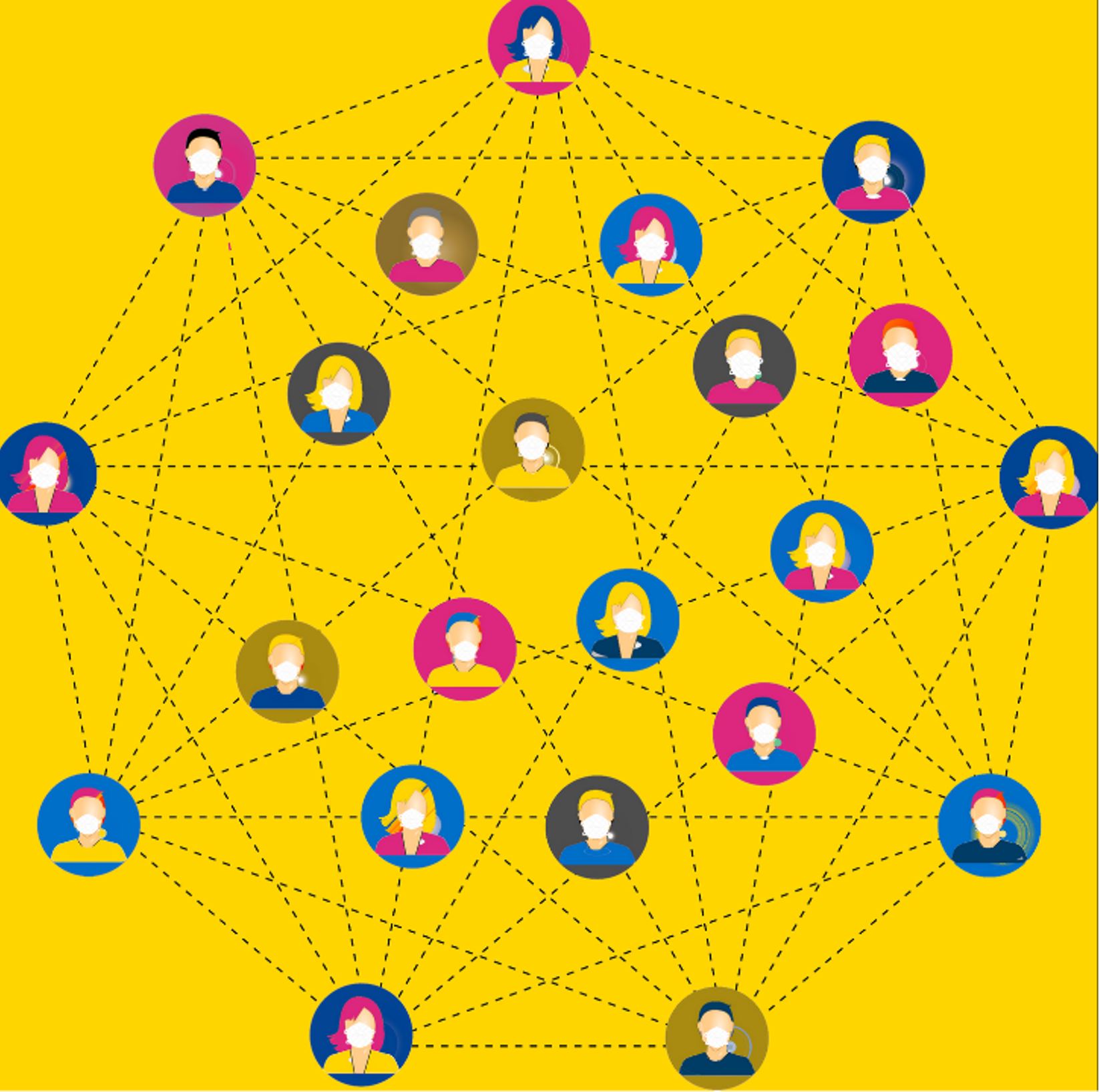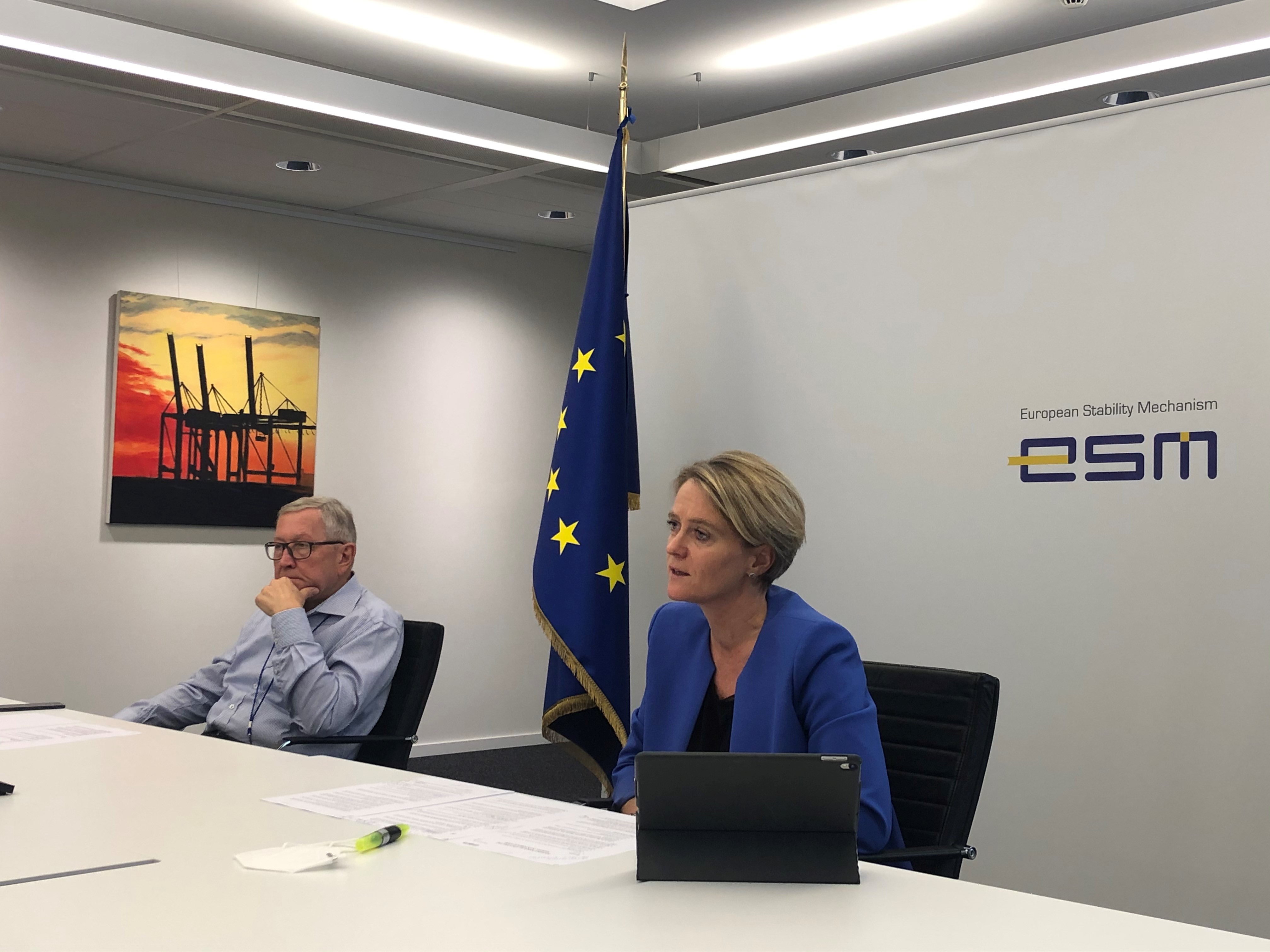Inner workings: When a global health crisis hits home

The health and economic crisis caused by the Covid-19 pandemic is set to overshadow this year and beyond. As I write, the number of Covid-19 cases has spiked in Luxembourg and we continue to monitor the situation very closely.
I will share some of the steps we have taken to protect staff, stay in touch with them during lockdown, facilitate their teleworking, and how we began a measured return to work strategy while still fulfilling our public mandate as the euro area’s rescue fund. Presently, we are also assessing the profound workplace changes triggered by the pandemic and how we can learn from this experience to build a sustainable post-Covid-19 future.
Strategising our approach to the Covid-19 crisis
Our ESM Incident Management Team takes the lead in crises that threaten to disrupt our business operations, such as the pandemic, and advises the Managing Director on appropriate actions. The Incident Management Team is composed of expert staff from across the organisation who maintain our business continuity plan.
For me personally, the pandemic posed a special challenge. In my capacity as Chief Operating Officer, on January 1 this year I had also assumed leadership of the Incident Management Team, shortly after reports of a virus spreading in China’s Hubei province started circulating. It seemed far away.
There was hardly time to onboard in that role – originally only a small part of my overall role – before it morphed into an almost full-time occupation.
Since those early Covid-19 reports, the tragic worldwide human and economic consequences of the deadly virus mount daily while scientists work to find a vaccine and governments provide healthcare and economic support to their citizens. The ESM joined that effort as part of the European response in May, offering a credit line for euro area countries to finance healthcare costs related to Covid-19.
As an employer and a public institution accountable to its shareholders – the euro area countries – the ESM also had to protect the health of its staff and ensure it could fulfil its public mandate.
Our response to the Covid-19 crisis
This pandemic has become the greatest business continuity challenge in recent history. What is equally evident is the value of investing in building strong business resilience and continuity planning.
The World Health Organization declared the outbreak of Covid-19 a public health emergency of international concern at the end of January. It revised that to a pandemic on 11 March. The ESM benefitted from having a Pandemic Response Plan since 2013, reflecting lessons learned from earlier viruses. This plan provided a blueprint for addressing the first issues – from restricting business travel to reviewing the contingency arrangements of our key service providers to ensure continuous service.
The Incident Management Team met already in the first weeks of January to assess the risks and propose balanced and measured responses to the unfolding situation.
#StaySafe
One of the team’s first actions was to identify how to reduce the risk of contagion within the ESM’s building and protect staff.
This was of immediate and acute concern for an international organisation like the ESM, where several key staff have regular travel duties and participate in public functions, and third parties visit our Luxembourg offices. In January, we began to assess whether and when to curb travel by ESM staff, and also to decline access to ESM premises by external visitors.
To confirm our digital readiness should we ever have to invoke full teleworking, social distancing, and self-isolation, the ESM carried out an all-staff test one evening in February. Our IT team tested how robust our technology and networks would be, by having all our staff connect from their homes, download content, access websites, and send emails to measure if the servers could withstand such a surge in data traffic.
In addition to heeding medical authorities’ advisories, the team was mindful of the actions European Union institutional peers were taking during the unfolding crisis.
As the overall situation deteriorated in early March, we asked most staff to work from their homes, with only a very small core team of around 10 staff members remaining in the office.

The pandemic cannot stop ESM staff staying connected.
#StayConnected
In addition to staying physically safe from the virus, the importance of looking after the mental health of our staff during the outbreak was – and still is – equally critical.
Isolation and loneliness can easily lead to mental health problems that are exacerbated by the threat of Covid-19. The virus not only affects those with the disease, but also causes many of us to feel anxious and distressed. As we realise that our ‘normal’ has changed and the world may never be the same, we experience a sense of grief at the loss of how things were.[1]
While everyone reacts differently to such stress factors, we have a role as an employer in keeping a close connection with our people. Maintaining regular communication, keeping staff up to date about our business’s response to the outbreak, and making sure everyone is aware of the supports available to them are key parts of our response. Near the start of the lockdown, the ESM produced a film with staff volunteering contributions on their take on teleworking. The ESM also sent two ‘care packages’ to every employee, the first bag filled with edible and anti-stress goodies, the second with a mask with the ESM logo and a publication marking our tenth anniversary.
Managing the mental health of our staff is not only the right thing to do, it also ensures that our staff are better able to fulfil their roles and help the ESM to deliver on its mandate.
This strong (virtual) connection and collaboration would of course not have been possible without modern technology. The ESM always embraces the opportunities new technology offers. Our team quickly put in place the facilities for teleworking, enabling us to employ a variety of digital channels, creating connectivity between our colleagues and our external stakeholders.
Videoconferencing is now an essential daily routine for all ESM staff and has become an important tool for internal communications. ESM Managing Director Klaus Regling and I have communicated from the ESM building to teleworking staff weekly via videoconferencing platforms.
My colleague, ESM Secretary General Nicola Giammarioli also explained in his blog column recently, how during the lockdown the ESM and Europe turned to technology in order to take important decisions about policy response virtually.
With the need to limit physical social contact to save lives, now probably more than ever, we must stay connected and work together as a community with a sense of empathy to build a stronger Europe. The virus threatens everyone and we are all part of the solution.

ESM Managing Director Klaus Regling (left) and Chief Operating Officer Sofie De Beule-Roloff take staff questions virtually.
Data not dates
During the summer, we increased the number of staff returning to the office to around 20% of our 200 colleagues. Then, in September, the ESM began the next phase. We returned 30% to 40% to the workplace – under strict conditions, such as: one person per office and per washroom, mask wearing in all public areas, designated foot traffic flow for staircases, closing of small meeting rooms, 100% fresh air in the building, flash cards to identify areas that need cleaning.
Adhering to our motto “data not dates” the ESM may gradually allow more staff to re-occupy the office space once the pandemic is increasingly under control. However, with the fresh spike in Covid-19 cases, the ESM also stands ready to reverse a return to the office if the conditions require such action.
Close monitoring, ensuring readiness, and acting quickly in an informed manner are key to dealing with the pandemic menace. We now know that Covid-19 will be with us longer than some optimistic forecasts in the spring had suggested and it is likely to be something we will need to learn to live with, treat, and mitigate.
Beyond the pandemic
While ensuring a smooth and safe return to the workplace, we are also preparing for the post-crisis time. The Covid-19 consequences are profound and far-reaching. We are now in a new world and we need to learn from our extraordinary experience to emerge more resilient from this pandemic.
While still within the Covid-19 crisis, we have already started assessing how we responded as an institution to the pandemic and what we could do in the future to further reduce risks. We also look to learn how we can enhance our organisational resilience to be able to withstand, and even thrive, in environments of disruption, uncertainty, and change.
In September, we conducted a survey to look into how the extended teleworking affected our staff. What were the pros and cons of working from home? Would a measured, sustainable version be a good thing if it improved staff health and did not impair productivity? What other accelerated trends in workplace dynamics do we need to prepare for? How can we adapt our skills and roles to the post-pandemic ways of working? I hope to share some of our findings in my next blog.
Equipped with these findings, we trust that we can emerge from this crisis better suited to counter future risks as well as recognise and seize the opportunities crises present, thereby contributing to a stronger, more resilient institution, community and Europe.
Acknowledgements
The author would like to thank colleagues Beatrice Avoscan, Raquel Calero, Adriana Chituc, Sharman Esarey, Nicola Giammarioli, Peter Lindmark, and George Matlock for contributing to this blog.
About the ESM blog: The blog is a forum for the views of the European Stability Mechanism (ESM) staff and officials on economic, financial and policy issues of the day. The views expressed are those of the author(s) and do not necessarily represent the views of the ESM and its Board of Governors, Board of Directors or the Management Board.

